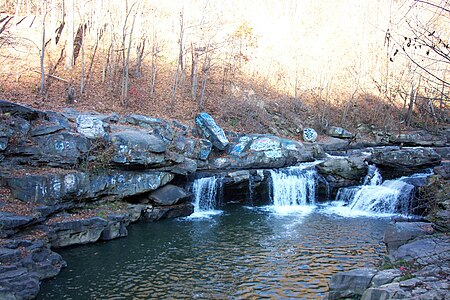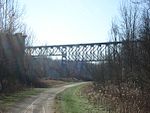Jacobs Creek (Youghiogheny River tributary)
Rivers of Fayette County, PennsylvaniaRivers of PennsylvaniaRivers of Westmoreland County, PennsylvaniaTributaries of the Youghiogheny River

Jacobs Creek is a 33.4-mile-long (53.8 km) tributary of the Youghiogheny River beginning in Acme, Pennsylvania and draining at its mouth in the town of Jacobs Creek into the Youghiogheny River. Jacobs Creek is the southwestern border of Westmoreland County and the northwestern border of Fayette County. The area was a major producer of rye whiskey in the decades before Prohibition.
Excerpt from the Wikipedia article Jacobs Creek (Youghiogheny River tributary) (License: CC BY-SA 3.0, Authors, Images).Jacobs Creek (Youghiogheny River tributary)
Banning Road, Perry Township
Geographical coordinates (GPS) Address Nearby Places Show on map
Geographical coordinates (GPS)
| Latitude | Longitude |
|---|---|
| N 40.126944444444 ° | E -79.743055555556 ° |
Address
Banning Road
Banning Road
15448 Perry Township
Pennsylvania, United States
Open on Google Maps









